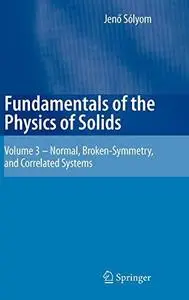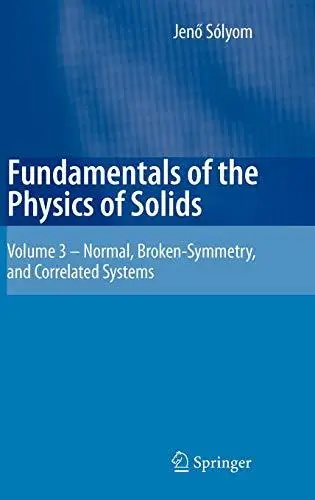Fundamentals of the Physics of Solids: Volume 3 - Normal, Broken-Symmetry, and Correlated Systems By Jenő Sólyom (auth.)
2010 | 747 Pages | ISBN: 3642045170 | PDF | 16 MB
2010 | 747 Pages | ISBN: 3642045170 | PDF | 16 MB
This book is the third of a three-volume series written by the same author that aims to deliver a comprehensive and self-contained account of the vast field of solid-state physics. It goes far beyond most classic texts in the presentation of the properties of solids and experimentally observed phenomena, along with the basic concepts and theoretical methods used to understand them and the essential features of various experimental techniques.The first volume deals with the atomic and magnetic structure and dynamics of solids, the second with those electronic properties that can be understood in the one-particle approximation, and the third with the effects due to interactions and correlations between electrons. In the present volume the electron—electron interaction is treated first in the Hartree—Fock approximation. The density-functional theory is introduced to account for correlation effects. The response to external perturbations is discussed in the framework of linear response theory. Landau’s Fermi-liquid theory is followed by the theory of Luttinger liquids. The subsequent chapters are devoted to electronic phases with broken symmetry: to itinerant magnetism, to spin- and charge-density waves and their realizations in quasi-one-dimensional materials, as well as to the microscopic theory of superconductivity. An overview is given of the physics of strongly correlated systems. The last chapter covers selected problems in the physics of disordered systems. The text provides material for upper-level undergraduate and graduate courses. It will also be a valuable reference for researchers in the field of condensed matter physics.



